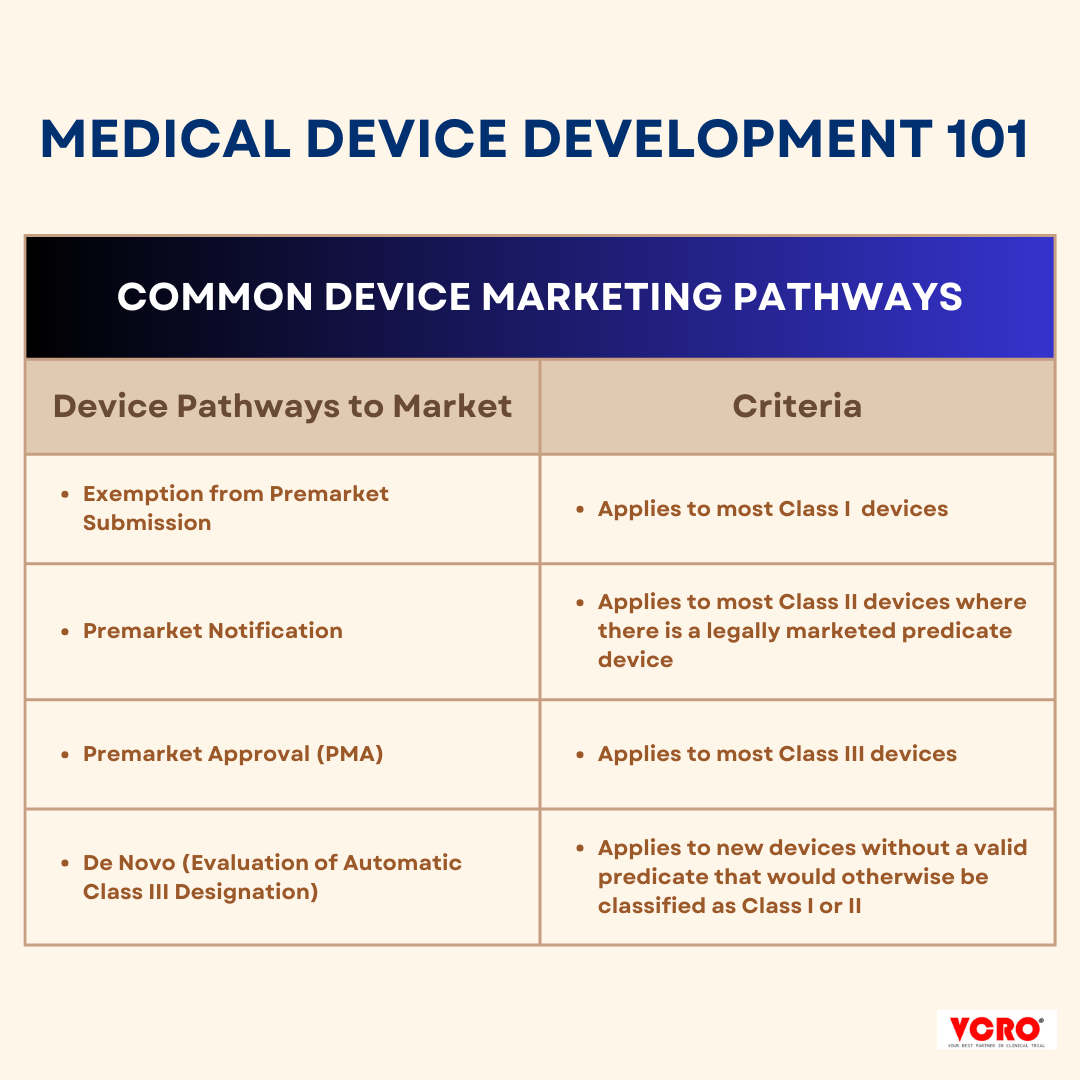Medical Device Development 101: Pathways to Clearance or Approval in the U.S.
Unlike drugs, medical devices vary significantly in their complexity, mode of action, and purpose, and may even remain with or be implanted in a patient’s body on a permanent basis. Due to this variability and complexity, medical devices are classified according to their inherent risk to patients and users. The higher the potential risk of a medical device is, the greater the regulatory scrutiny it will face. Sponsors must develop a thorough understanding of the regulatory landscape and approval pathways to bring their devices to market.
Most Class I devices, and a small percentage of Class II devices, qualify for “exempt” status, meaning there is no need for proof of safety or efficacy. Class III devices pose significantly greater risks to patients and typically require Premarket Approval (PMA), the most rigorous process required for devices by the FDA.
For most Class II devices, a premarket notification, also known as a 510(k), is the chosen pathway to market. A 510(k) consists of a submission to the FDA that demonstrates two claims: 1) The proposed device is sufficiently similar to an existing and legally marketed U.S. product (predicate device), and 2) it is substantially equivalent to the predicate device, meaning it is as safe and as effective.
All new types of devices that the FDA has not previously classified, i.e., do not have a legally marketed predicate device, are automatically or “statutorily” classified into Class III, regardless of the level of risk they pose or the ability of general and special controls to assure safety and effectiveness. However, if sponsors believe their device is appropriate for classification into Class I or Class II and determines there is no legally marketed predicate device, they may submit a De Novo Classification Request (hereafter “De Novo”). Previously, in order to submit a De Novo, a device first had to be found “not substantially equivalent (NSE)” to legally marketed predicate devices via a 510(k). However, since July 9, 2012, this requirement was removed, and sponsors were allowed to directly submit a De Novo request to the FDA without a preceding 510(k) and NSE.
The granting of the De Novo request allows the device to be marketed immediately and creates a classification regulation for devices of this type, and permits the device to serve as a predicate device. If the De Novo request is declined, the device remains in Class III and may not be marketed unless the device is found substantially equivalent to an existing legally marketed class I or class II device, a PMA is approved, or a new De Novo request is granted.
A summarization of the most common device marketing pathways is shown in the table below:

Reference:
FDA website: How to Study and Market Your Device
